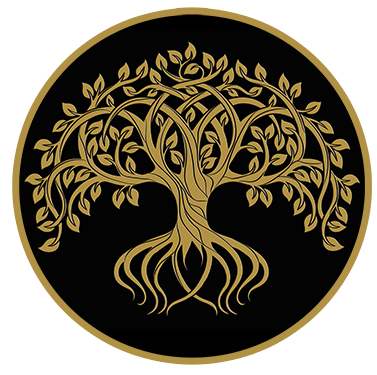The history of meditation
How to Manage Restlessness and Impatience During Meditation
By Roger Gabriel (Raghavanand)

The history of meditation is actually the history of existence itself so this will be the shortened version!
Modern science tells us that the universe came into being with a big bang. Actually, it wasn’t a bang but rather a big OM, which didn’t just happen once but is happening continuously. The Absolute, Pure Consciousness, is the potential for everything but is nothing in Itself, which means it is also Pure Silence. At some point, the Absolute decided it wanted to have an experience but, as nothing else existed, it could only experience itself. As experience is, by contrast, the Absolute had to move within itself to experience itself. Movement creates friction, which creates sound. However, by definition, the Absolute is silent so this sound had to be forced out of Pure Consciousness and became conditioned or modified consciousness. This first sound was OM, which then diversified into all the sounds and vibrations of the manifest creation.
To paraphrase the Gospel of John, In the beginning, was the Word (OM), the Word became flesh (manifest creation), the One became many. From the Vedic texts, we learn that the non-dual OM (the sound of silence) emerged from the Supreme Unmanifest Absolute becoming the three letters A U M. From these came the gross physical universe (Bhur) and subtle universes, causal (Bhuvah), celestial (Suvar). From them emerged the great Gayatri Mantra. From the Gayatri Mantra emerging knowledge of the transcendental nature of the Cosmic Being (Purusha). From this emerged the entire meaning of the Vedas. From the Vedas, Brahma created the manifest Universe as the Individual Soul – Jiva, Ego and Individuality, Intellect and Mind, Subtle Elements, Gross Elements and the Material World.
The importance of the mantras OM and the Gayatri cannot be overemphasized. Aligning ourselves with the sound of OM aligns us with the whole of creation. By knowing and chanting the Gayatri Mantra, we are drawn back through all the layers of evolution to that subtlest level of being.
OM is the beginning and end of the story of meditation. It is the creator breathing out and breathing in. The exhale is the evolution of the entire manifest creation and the inhale is its return to Source. All the sounds, the vibrations of the Universe, all the mantras are contained within and emerge from OM. We are the creators of the Universe, exhaling it into existence and inhaling it back into the unmanifest.
The entire story of meditation would end here except for one small detail – we have forgotten that we are the creator. We have become so attached to the exhale and all its multifold creation that we have forgotten to breathe in. It’s as though we are holding our breath out and forgetting who we really are. The path of meditation is the story of learning how to take a spiritual in breath and return to our essence.
The Vedas describe four periods of time called Yugas, lasting for tens of thousands of years. Sat Yuga was the Golden Age when most people were enlightened and had use of yogic powers, Satwa Guna dominated. This was the dawn of Vedic times, a time of balance and harmony between humans and nature. The four Vedas, Rig, Sama, Yajur and Atharva, contain all the knowledge of the external world and each has four parts. The Samhitas contain the mantras,
The Brahmanas give an explanation of sacred rituals, the Aranyakas focus on the inner meanings of the rituals and the Upanishads discuss Atman, Brahman and the inner meaning of life. The Upanishads later became the foundation of what we now know as Vedanta, the culmination of the Vedic wisdom. Upanishad literally means “to sit near” so this was special knowledge reserved for the advanced students who would hear it directly from a teacher. This was also the beginning of meditation practices as tools to explore the inner world, rather than the outer.

Get the gear that never gives up
Over time the purity of the teachings began to diminish and moral decay opened the door to the less enlightened Treta Yuga where the forces of Satwa, Rajas and Tamas Gunas were equal. We started to forget who we really are, our souls wandered lost and the cycle of accumulating Karma and the need for Rebirth began. The Oneness of Brahman was lost to duality and the concept of Ishwara, a personal God and the multitude of gods and goddesses emerged. The six “Enemies of the Soul” – desire for sensory pleasure, anger, greed, delusion, pride, and jealousy were born.
This was the time when Lord Vishnu, the maintainer of the Universe, incarnated as Rama, the ideal human, to try to restore life’s values of Kama (joyous relationships), Artha (material security), Dharma (ethical values) and Moksha (liberation). This period gave us the great teachings of the Ramayana and the Yoga Vasistha. Meditation was reserved for those who had access to a teacher.
The fortunate few souls climbed out of Samsara (cycle of birth and death) but for most, the decline continued into Dwapara Yuga, where Rajas Guna dominated. Once again Lord Vishnu incarnated, this time as Krishna and who gave us the greatest of all the Vedic texts, the Bhagavad Gita. While the Upanishads show us pictures of different parts of our spiritual journey, the Gita is like a practical guidebook. Krishna introduces us to the Four Paths of Yoga – Bhakti, Karma, Gyana, Raja and, in doing so, made spiritual practices available to everyone. He taught “Established in Being perform action”, which is the root of meditation. Again only a few listened and, as delusion and chaos continued, the majority of souls slipped even further into darkness.
Now we find ourselves in Kali Yuga, the current period dominated by the inertia of Tamas Guna, overshadowed by materialism, fear, selfishness, doubts, greed, and lust. In this state of ignorance, the energetic body can become inverted in relation to the physical body leading to the senseless destruction, suffering, and confusion we experience around us.
There is, however, a glimmer of hope. When things are going well, we often forget to say thank you, we forget to appreciate the Divine quality in life. This has happened in the previous Yugas causing our downfall. However, when our lives are really miserable, we finally ask, “Isn’t there something better?” and our spiritual journey begins. We meet teachers, learn techniques and slowly begin to remember.
Throughout all these Yugas or ages, there have been great meditation teachers, however, most are now lost to antiquity or mythology. In more recent times we, fortunately, have more direct links to the wisdom of Enlightened Masters. The Buddha gave us Awareness and Vipassana meditations. The great religions of Judaism, Christianity, and Islam have given us prayer and contemplation. In the Vedic Tradition, Patanjali consolidated much of the teaching in his Yoga Sutras, giving us a very practical path through the Eight Limbs of Yoga. Later, Adi Shankara revived the knowledge of the Oneness of Brahman and the non-duality of Advaita Vedanta.Most of the teachings of the Chopra Center are reflections of the lineage of the Shankara Tradition, which includes such great luminaries as Sri Ramakrishna, Swami Vivekananda, Ramana Maharshi, Sri Aurobindo, Paramhansa Yogananda, Anandamayi Ma, and Osho. Most recently, we have the teachings of Swami Brahmananda Saraswati and Maharishi Mahesh Yogi. Many other teachers, too many to mention, have and still today, walk on our planet sharing their wisdom.
Deepak’s insight has now brought together the essence of many of these great teachings in our Primordial Sound Meditation Program. Mindfulness breath awareness, self-inquiry, neti neti, silent repetition of a mantra leading to transcendental consciousness, resting in the ground state of awareness and planting the seeds of intention for a life in perfection.
The ever-unfolding process of evolution gives us the illusion of a universe with all its aspects. Meditation is a process of involution, a journey back to our Source, where we realize that the universe and all its multiplicity are merely expressions or appearance of One essential Reality, Brahman.
There has never been a time when it was easier to learn meditation or when it was more needed. As we work together to realize Deepak’s goal of 1 billion meditators, we can create a conscious shift back into Sat Yuga. The journey will be complete and the story of meditation will reach its happy ending.
“How to Manage Restlessness and Impatience During Meditation
By Roger Gabriel (Raghavanand)”
The first step to managing restlessness and impatience is to understand the feelings. There are three basic types of experiences you can have during meditation:Falling asleep,Having thoughts and feeling restless , Slipping into the field of silence and infinite possibilities in the spaces between thoughts , While we all would prefer for our meditations to be silent, all these experiences are correct.Meditation is a process of purification. The mind and body gain deep levels of rest, which allow stresses, fatigues, and toxins to be released. This release increases the activity of the mind and body, causing you to have thoughts and perhaps feel restless. Your essence, who you really are, has been covered over by layer upon layer of the nonsense that life has sent your way. Meditation is a process of peeling off these layers to reveal the magnificence that lies within. So, even though you may complain about these disturbances, they are the indication that something good is happening. As Mother Teresa said, “Restlessness is only the surface level of a beautiful wellspring of energy within.”
Also remember that you can think thoughts at the superficial, surface level of the mind and also at deeper, more refined levels. Just because you are having thoughts in meditation doesn’t mean that you aren’t in a very restful state. What is important is when you realize that you’re thinking thoughts, you turn your attention back to the object of your meditation, such as your mantra or breath. This is correct meditation. To choose to continue thinking the thoughts would, in the context of meditation, be a waste of time.
Your meditation experience is often a reflection of your life. If you are overly tired or not getting enough good quality rest at night, you may fall asleep during your meditation. If your life is very busy and chaotic, your meditations may be restless and troubled. Meditation helps you create a happier and more harmonious life; however, consciously taking steps to balance your lifestyle will also support your meditation experience.
Remember the story of the tortoise and the hare? Most of us live our lives like a hare, dashing off in all directions, multi-tasking, or lost in the haze of our own confusion—while it was the tortoise’s measured consistency that won the race. Even though you may feel as though you are “running out of time,” you actually have the whole of eternity before you. Slow down!
Try the following eight tips to manage restlessness and impatience during your meditations.
As mentioned before, meditation is a purification process. The thoughts, feelings, and emotions you may have during your meditation are the garbage being thrown out. So, unless you’re the sort of person who looks through the trash to see what you’ve thrown out before the garbage truck arrives, don’t waste time analyzing your meditation experiences. Whether you are having mundane thoughts about your daily activities, seeing beautiful images and hearing celestial singing, or you are listening to Deepak talking about non-local reality, they are not important. The purpose of meditation is to enrich your life. The experiences during meditation will be what they will be; what is important is the shift in awareness you begin to enjoy in your everyday lives as a result of your meditation experiences.
This may help minimize any disturbances. You can meditate anywhere but finding a quiet place is preferable. If you’re at home, switch off the phone, put the children and pets in another room, and let other members of your household know not to bother you.
Let the activity of the day wait a little longer or your meditation will be filled with mentally composing answers to emails and texts.
This allows you to get the kinks out and sit more comfortably.
As you inhale, be aware of how your body feels as well as what’s going on with your thoughts and emotions. As you exhale, have the intention of letting go of anything that doesn’t concern you at that moment. You can come back and address it after the meditation but try to put aside any unnecessary distractions.
Either sitting or standing, place one hand level over your navel, fingers pointing upward, palm toward the center.
Raise the other arm straight up over your head, again with fingers extended upward and palm toward the center.
Take a full breath in and, as you release it, bring your palms together at your heart center.
Repeat this three times, alternating the hands if you wish.
In the afternoon, after a day’s activity, it’s often beneficial to take a few extra minutes to settle your mind and body before beginning your meditation. A little stretching, if possible, and even a 10 to 15-minute nap (napping is one of the lost joys of modern society) or 2 to 3 minutes of alternative nostril breathing is a great way to settle in preparation for meditation.Using your right hand, close your right nostril with your thumb.Exhale slowly through your left nostril.Inhale through your left nostril. Use your right ring finger and little finger to close off your left nostril.Release your thumb and slowly exhale through your right nostril.Inhale through your right nostril.Again, place your thumb back over your right nostril, release your ring finger and little finger, and continue breathing and alternating as before. This is an effortless, continuous flow of the breath with no controlled pauses, allowing the breath to flow at its own speed and rhythm.
Although the process of meditation itself should be effortless, a little discipline regarding the practice can be helpful. Before starting your session, decide how long you intend to meditate for and commit to sticking with that time no matter what your experiences.When you first learned to meditate, you did so for a reason. Meditation will eventually fulfill this and unfold other treasures beyond your wildest dreams. Learn to accept your experiences as part of the plan. Don’t sacrifice what you really want for what you think you should have right now. All traditions tell us that patience is a virtue and ultimately, the reward of patience is patience.
After moving to the US, Roger began studying Ayurveda the ancient Indian system of healthcare. In 1985, while helping to establish centers for Ayurveda and meditation, he met and became friends with Deepak Chopra. Since then, Roger has assisted Deepak with numerous training programs, seminars and workshops, taught thousands of people on all continents to meditate, and assisted in training hundreds to be teachers of meditation, Ayurveda and yoga.
Roger has been blessed to meet and study with great teachers in India and the West and has traveled extensively in India. He incorporates much of what he has learned in his practices and teaching. In 2006, Roger received his spiritual name Raghavanand from Shree Satuwa Baba Maharaji of Varanasi, India.
As time permits, he involves himself with charity programs in India and takes like-minded seekers on tours to some of his favorite pilgrimage sites there. Roger currently serves as a Chopra Master Educator, member of the Chopra Center Certification’s Advisory Board, and teaches regularly at Chopra Center workshops, seminars and teacher training programs. When not traveling, he lives in Encinitas, California.

